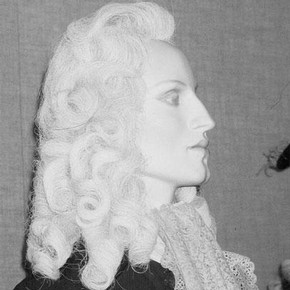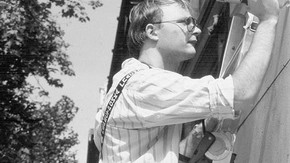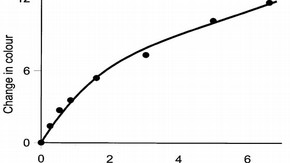Conservation Journal
October 1998 Issue 29
Science Surgery
Welcome to this new and regular feature of the Conservation Journal. This page is produced by the Science and Information Team and presents some of our smaller tasks. The content will vary - sometimes reporting facts gleaned from the examination of an object (or group of objects), whilst on other occasions the focus may be a question that has sparked debate.
One particular source for this regular page will be the 'Science Surgeries' that we hold every Thursday afternoon. The concept of this afternoon was to allow members of the Museum to 'walk in' with a query or so that the smaller jobs could proceed. Alternatively, individuals have used these afternoons for chats about potential projects. Once a month these sessions are given a theme where a member of the team targets a particular subject in an informal manner. The success of these sessions has led us to think about how we could expand - this page is one example.
We cannot offer a free consultancy service to those outside of the Museum but if you have interesting queries that fit with our own tasks we will bring them into the overall equation. You may then find the answers on this very page.
What is this Dandruff ?
An outbreak of dandruff was noticed on the shoulders of some mannequins in the Dress Court at the V&A. Facsimile wigs, that formed part of the costume display, were found to be the source. The dandruff contained titanium suggesting that the white deposit was the pigment, titanium white. This investigation by the Conservation Science section solved the mystery of the dandruff and reassured the textile conservators and curators that, although somewhat unsightly, the dandruff posed no chemical hazard to the costumes.
V&A changes colour
For eight years we have been measuring discolouration of the V&A's facade. In 1989, the building was cleaned by combination of damp and dry abrasive techniques. Portland stone, used on V&A's front, is known to reform stains and discolouration after cleaning. Each face lift costs three million pounds and takes about 18 months. Colour measurement helps determine the effectiveness of the cleaning technique.
These colour measurements are taken at various points on the building. From this data, colour changes are calculated. The graph represents changes for sheltered areas (measurement site facing north at roof height). A fuller report on this work will follow.
October 1998 Issue 29
- Editorial - Communication
- The Cosimo Panel
- 50 Years of Following In Grinling Gibbons' Tool Cuts
- Cracking Crizzling - Eight Years of Collaborative Research
- The Power of the Poster and Paper Conservation
- The RCA/V&A Conservation Course Study Trip
- Science Surgery
- Editorial Board & Disclaimer
- Printer Friendly Version


